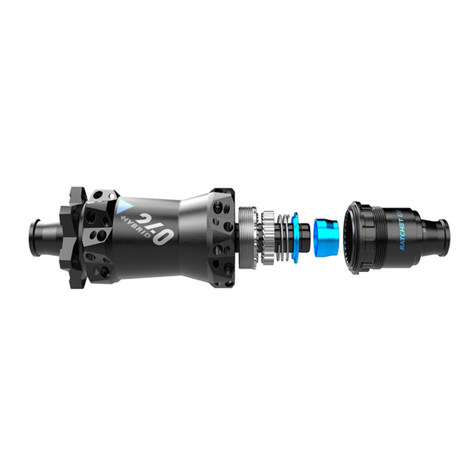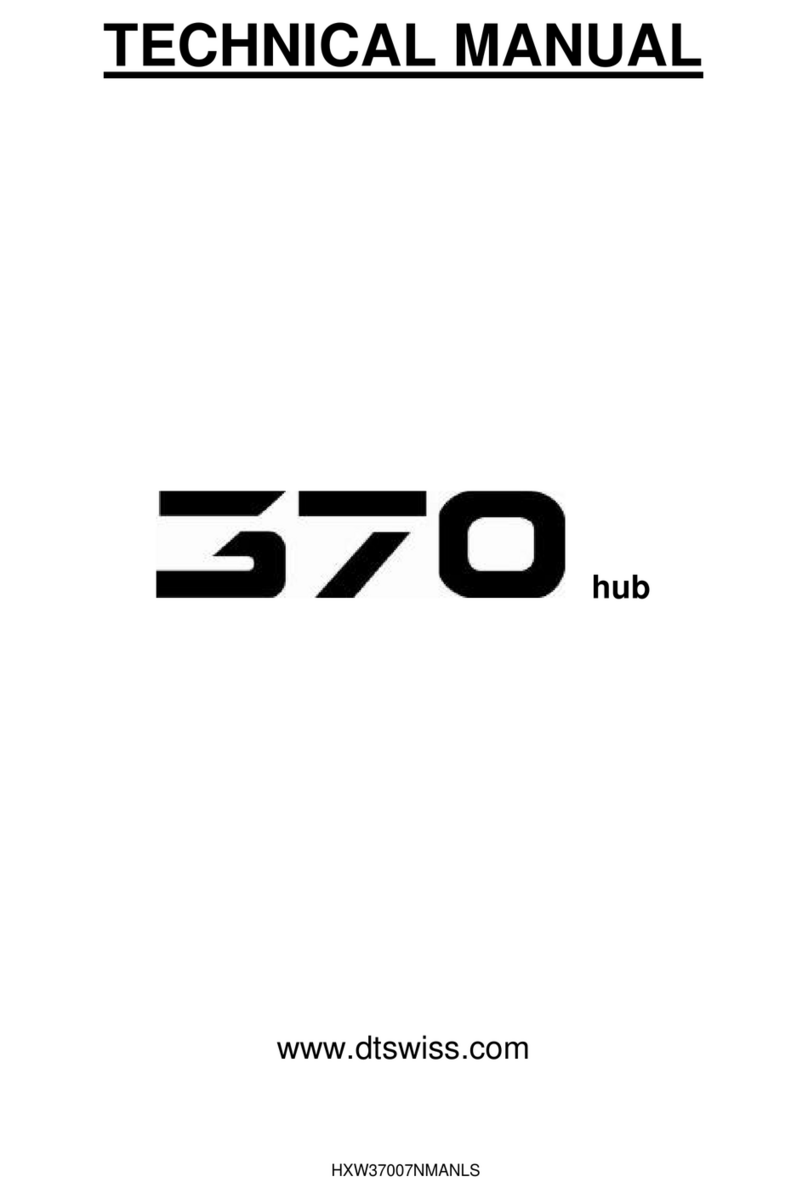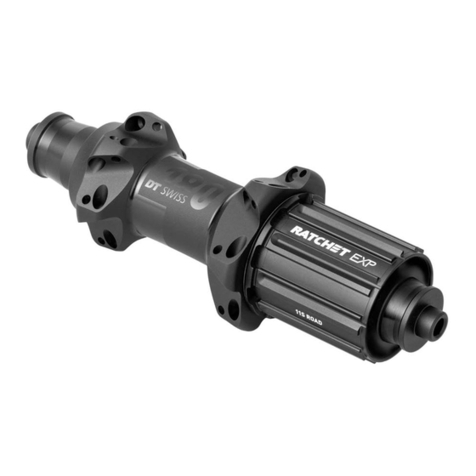
4
1.6 HOW TO USE THE MANUAL
The steps described in this manual must be carried out in the order they are shown. If steps are
ignored or executed in a wrong order, the function of the component cannot be guaranteed.
1.7 GENERAL MAINTENANCE INFORMATION
Unless otherwise specied, moving parts, threads, O-rings and sealings must be greased before
assembly.
CLEANING
For an optimal result of the maintenance works, every component that will be disassembled must
be cleaned. Only use cleaners and degreasers which do not damage the components. Especially
the cleaning of O-rings and sealings requires mild cleaners. Observe the instructions for use of
the respective cleaner.
DT Swiss recommends the following cleaners:
• Motorex Rex
• Motorex Swissclean
• Motorex OPAL 2400, 3000 OPAL, OPAL 5000
Use soap water or similar mild cleaners for external cleaning.
TOOLS
To ensure a damage-free mounting and dismounting of the components, only use the tools which
are mentioned in this manual. Special tools are indicated at the beginning of a chapter in the
table "Required material".
The use of different tools is at the discretion of the user. If components are damaged by the usage
of differing tools, the user is liable.
DT Swiss special tools are precision tools. Damage-free mounting and dismounting of the
components can only be ensured if the tools are working properly and if the condition of the tools
are perfect. Always keep the tools in their original packaging or adequate devices to prevent
damage.
1.8 ENVIRONMENTAL PROTECTION
The statutory regulations shall apply. Whenever possible, avoid creating waste. Waste, especially
carbon, lubricants, cleaners and any other uids must be disposed in an environmentally
compatible manner.
Only print this manual if electronic usage is not possible.
1.9 EXCLUSION OF LIABILITY
The activities listed in this manual may only be carried out by persons with sufcient specialist
knowledge. The user is liable for any damage or consequential damage caused by wrongly
maintained or installed components. If you have doubts, please contact an expert or your region's
DT Swiss pro level service center.
1.10 WARRANTY
Warranty conditions, see www.dtswiss.com






























